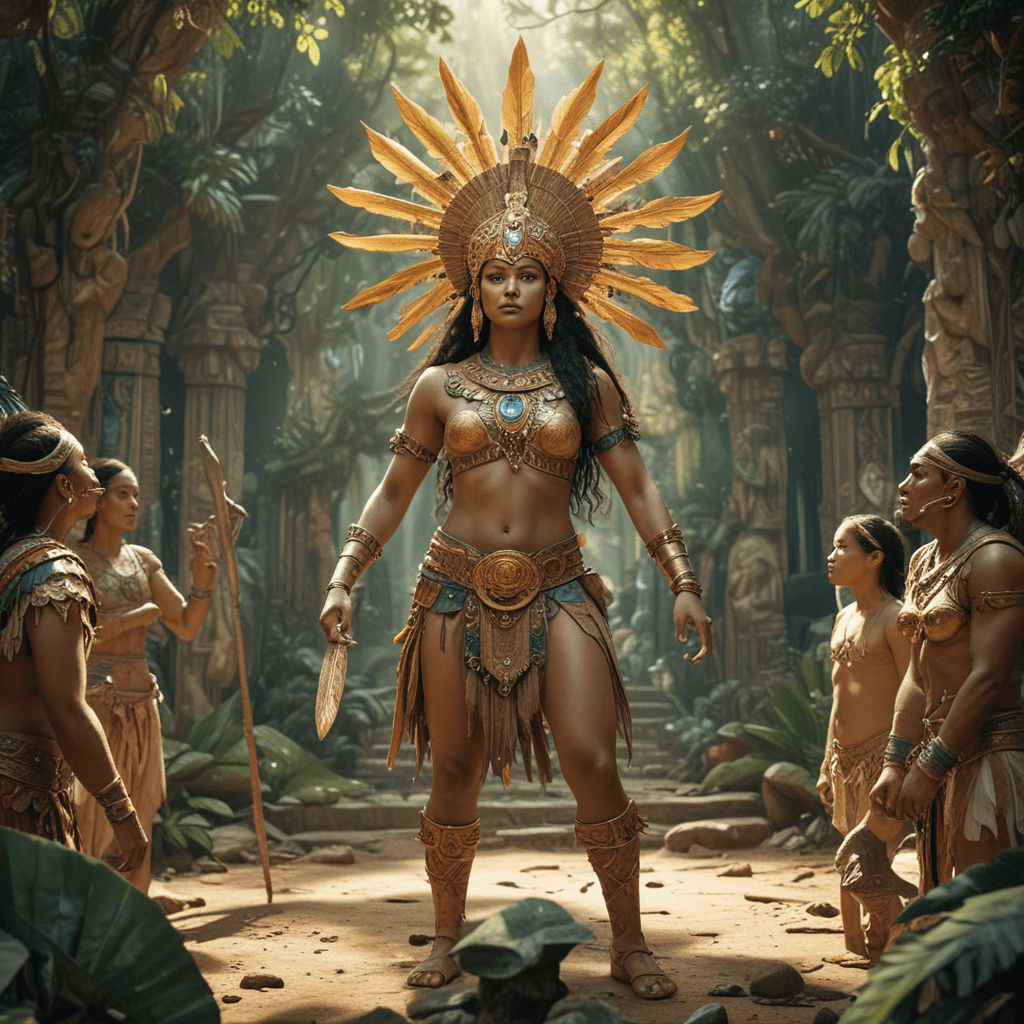Legends of the Underworld: The Myths That Shape Our Culture
I. Introduction
The term “Underworld” elicits visions of shadowy realms beneath the earth, yet its definition varies widely across cultures. In many traditions, the underworld is seen as a place where souls journey after death, a realm of judgment, and sometimes a site of rebirth. From ancient Greece to modern interpretations, these myths play a pivotal role in shaping societal values and beliefs, influencing how civilizations understand life, death, and the moral order of the universe.
This article aims to explore the multifaceted nature of underworld myths, examining their historical context, major deities, symbolism, representation in literature and art, cultural practices, psychological interpretations, and their resurgence in modern culture. Through this exploration, we will uncover the significance of these legends in shaping human experience and understanding.
II. Historical Context of Underworld Myths
Underworld myths have been a part of human storytelling for millennia, evolving alongside civilizations. Ancient cultures often held distinct views regarding the afterlife, which were deeply intertwined with their social structures and spiritual beliefs.
- Ancient Civilizations: In ancient Egypt, the afterlife was a complex journey through the Duat, where Osiris judged the souls of the dead. The Greeks envisioned the Underworld ruled by Hades, where souls would dwell eternally unless granted passage back to life.
- Evolution Through Time: Over centuries, these myths have transformed, reflecting changes in societal norms, religious beliefs, and philosophical thought.
- Comparative Analysis: While the specifics of underworld beliefs vary, common themes can be found across cultures, such as the importance of morality and the idea of an afterlife.
III. Major Underworld Deities and Figures
Central to the myths of the underworld are various deities and figures that embody its principles and narratives.
- Hades and Persephone: In Greek mythology, Hades represents the underworld itself, while Persephone’s annual descent and return symbolize the cycles of life and death.
- Osiris and Anubis: Egyptian mythology features Osiris as the god of the afterlife, and Anubis, the god of mummification and the guardian of graves, highlighting the importance of the dead’s journey.
- Yama: In Hindu and Buddhist traditions, Yama is the god of death, overseeing the realm of the dead and the cycle of reincarnation.
- Native American Interpretations: Many Native American cultures have unique views of the underworld, often viewing it as a place of transformation and healing rather than punishment.
IV. Symbolism and Themes in Underworld Myths
Underworld myths are rich in symbolism and themes that resonate deeply with human experience.
- Death and Rebirth: Many narratives emphasize the cycle of life, depicting death as a transition rather than an end.
- Morality and Judgment: Deities often serve as judges of the dead, reflecting societal values and beliefs about right and wrong.
- Transformation and Spiritual Journeys: Underworld myths frequently illustrate personal growth, with characters undergoing significant transformations during their journeys.
V. Underworld Myths in Literature and Art
The themes of the underworld have profoundly influenced literature and art throughout history.
- Classic Literature: Dante’s “Inferno” is a seminal work that explores the consequences of sin through a vivid depiction of the underworld.
- Artistic Representations: Various cultures have produced art that reflects their views of the underworld, from ancient Egyptian tomb paintings to modern sculptures.
- Contemporary Reinterpretations: Today’s films, books, and video games often draw on these ancient themes, showcasing the enduring relevance of underworld myths.
VI. Cultural Rituals and Practices Associated with the Underworld
Cultural practices surrounding death and the afterlife are deeply influenced by underworld myths.
- Funerary Customs: Many cultures have specific rituals for honoring the dead, which reflect their beliefs about the afterlife.
- Festivals: Celebrations like Día de los Muertos in Mexico honor deceased loved ones, emphasizing remembrance and the cyclical nature of life and death.
- Ancestor Worship: In various cultures, honoring ancestors is an integral part of spiritual practice, underscoring the connection between the living and the dead.
VII. Psychological Interpretations of Underworld Myths
Underworld myths also provide insight into the human psyche, as explored by psychologists.
- Carl Jung’s Perspective: Jung viewed underworld myths as archetypes within the collective unconscious, representing universal human experiences.
- Metaphor for the Human Psyche: The underworld often symbolizes the subconscious mind, where fears, grief, and unresolved issues reside.
- Exploration of Emotions: Myths provide narratives through which individuals can confront their fears, grief, and acceptance of mortality.
VIII. The Underworld in Modern Culture
The interest in ancient myths has seen a resurgence in modern culture, impacting spirituality and social discourse.
- Resurgence of Interest: Many contemporary works reference underworld myths, reflecting a renewed fascination with ancient wisdom.
- Influence on Spirituality: Modern spirituality often incorporates elements from these myths, exploring themes of life, death, and personal transformation.
- Role of Social Media: Platforms like Instagram and TikTok facilitate the sharing of myths and rituals, helping to keep these legends alive.
IX. Critiques and Revisions of Underworld Myths
As society evolves, so do the interpretations of underworld myths, leading to critiques and revisions.
- Feminist Perspectives: Feminist critiques often highlight the representation of female figures in underworld myths, questioning traditional narratives and advocating for a more inclusive understanding.
- Postcolonial Reinterpretations: Many cultures seek to reclaim their narratives, revising traditional underworld myths to reflect contemporary values and experiences.
X. Conclusion
Underworld myths serve as a profound reflection of human experience, encapsulating our fears, beliefs, and hopes regarding life and death. By examining these legends, we gain insight into the values and norms of different cultures, as well as our own. As we continue to explore and reinterpret these myths, they remain a vital part of our cultural heritage and collective consciousness.
